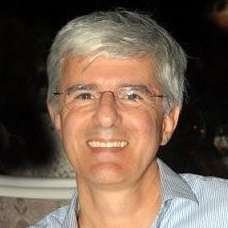Topic Editors



Advances in Astrobiology

Topic Information
Dear Colleagues,
Astrobiology is defined as the study of the origin, evolution, distribution, and future of life in the universe. This Topic seeks to collect papers that aim to answer some fundamental questions about the beginning and evolution of life on Earth (including the geological records of biosphere evolutions), possible existence of extraterrestrial life, and the future of life on Earth and other moons and planets. This Special Issue is particularly addressed to those scientists that study the emergence of life on Earth, determine how early life on Earth interacted and evolved with its changing environment, understand the evolutionary mechanisms and environmental limits of life, and explore habitable environments in our solar system and search for life, as well as those scientists that contribute to understanding the nature and distribution of habitable environments in the universe. We also seek papers aimed at recognizing signatures of life on early Earth and on other worlds, studying the nonbiological origin of organic compounds and the boundaries of habitable zones, bioregenerative life support systems, and the environmental limits of life. Finally, we seek papers focusing on the challenges posed by human presence in both low Earth orbit (e.g., ISS) and extraterrestrial orbiting stations (e.g., the Moon Space Gateway) or planetary bases, and the effect of space-related factors, such as altered gravity and magnetic fields, radiation, confinement, altered circadian rhythms, limited social interactions, high labor charge, psychological pressure, and limited or no access to fresh food.
Prof. Dr. Massimo Maffei
Dr. Barbara Cavalazzi
Dr. Marta del Bianco
Topic Editors
Keywords
- origin and evolution of life
- exobiology
- biological life support systems
- biogeochemistry
- geochemistry
- planetary sciences
- astrochemistry
- evolutionary biology
Participating Journals
| Journal Name | Impact Factor | CiteScore | Launched Year | First Decision (median) | APC | |
|---|---|---|---|---|---|---|

International Journal of Molecular Sciences
|
5.6 | 7.8 | 2000 | 16.3 Days | CHF 2900 | Submit |

Pharmaceutics
|
5.4 | 6.9 | 2009 | 14.2 Days | CHF 2900 | Submit |

Cells
|
6.0 | 9.0 | 2012 | 16.6 Days | CHF 2700 | Submit |

Biomolecules
|
5.5 | 8.3 | 2011 | 16.9 Days | CHF 2700 | Submit |

Plants
|
4.5 | 5.4 | 2012 | 15.3 Days | CHF 2700 | Submit |

Universe
|
2.9 | 3.6 | 2015 | 20.6 Days | CHF 2400 | Submit |

Cancers
|
5.2 | 7.4 | 2009 | 17.9 Days | CHF 2900 | Submit |

Antioxidants
|
7.0 | 8.8 | 2012 | 13.9 Days | CHF 2900 | Submit |

MDPI Topics is cooperating with Preprints.org and has built a direct connection between MDPI journals and Preprints.org. Authors are encouraged to enjoy the benefits by posting a preprint at Preprints.org prior to publication:
- Immediately share your ideas ahead of publication and establish your research priority;
- Protect your idea from being stolen with this time-stamped preprint article;
- Enhance the exposure and impact of your research;
- Receive feedback from your peers in advance;
- Have it indexed in Web of Science (Preprint Citation Index), Google Scholar, Crossref, SHARE, PrePubMed, Scilit and Europe PMC.

